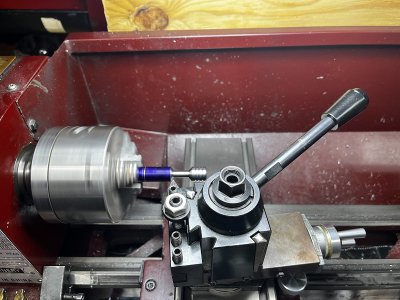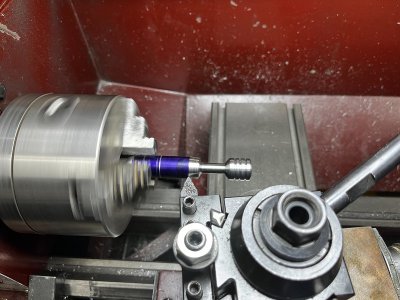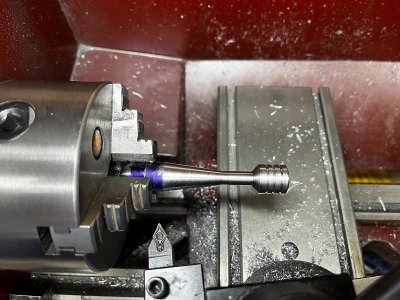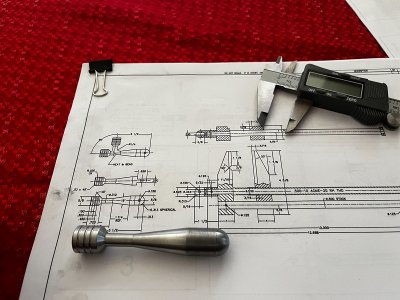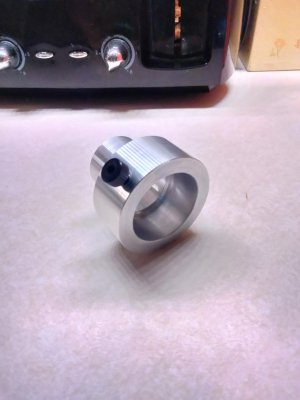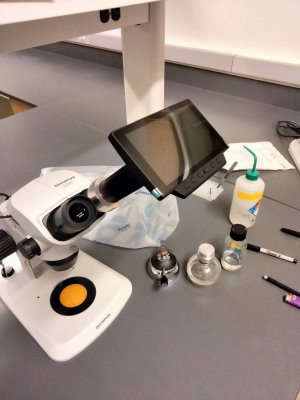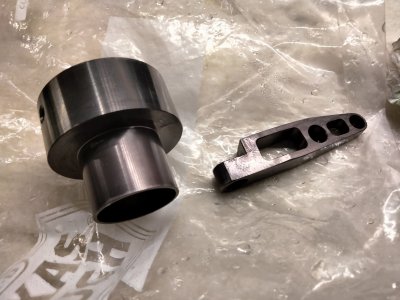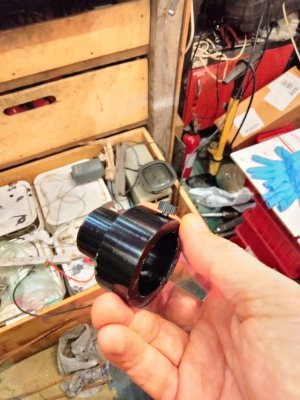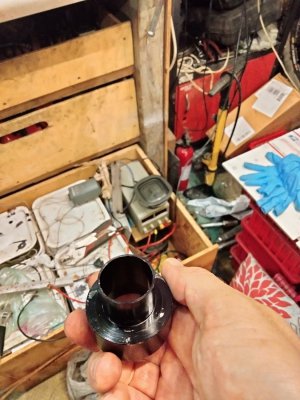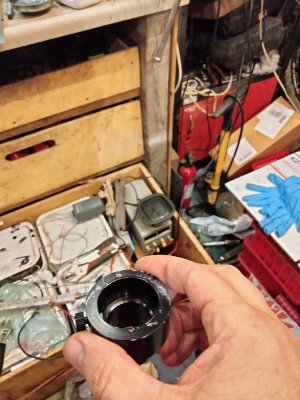POTD turned out to be TWO POTD. That’s what happens when I have to fix something before getting my actual project started. Ah, it’s shop time so what the heck!
The intended POTD involved using my Tennsmith stomp shear on some 16-gauge galvanized. The shear blade has a rake on it, the shearing starts on the RH side and works its way to the LH side. Since the pulling action is from right to left, I usually put my material up against the LH side graduated edge so the material is pulled into the stop.
My blank was about 24” wide and started to cut, but only made it about halfway along the edge. It’s a pretty simple mechanism; step down on a pedal that pivots off an axle. There’s a linkage on either side of the pedal that attaches to the shear bar. You get about an 8 to 1 mechanical advantage so at my 175 lbs., I get about 1400 lbs. of down force on the shear bar.
Houston, we have a problem when the stomp shear only scores a piece of matte board?!?
View attachment 408418
What the heck?!? I stepped on the pedal with nothing in place and saw the shear blade making it past the bottom shear bar. I set in a piece of matte board and it wouldn’t shear. Then I noticed as I stepped down that the pivot on the LH side was lifting up. Moved some crap out of the way and discovered the 1 ¼” diameter pivot pin between the shear’s frame and the back of the pedal was missing!
Ah, here's your problem. . . The axle pin for the foot pedal is missing!
View attachment 408420
View attachment 408419
RH side for comparison
View attachment 408421
View attachment 408422
The hole measured 1 ¼” diameter; figured on sticking in a piece of CRS. I shoved a tape measure into the hole to get a rough length and heard the pivot shaft sliding in the back tube. I stuck a magnet through the frame and tube and was able to get the pivot pin back up to the frame. Turns out the pin is threaded 3/8”-16. Ran in a bolt and was able to manipulate the pedal tube and slide the pivot pin back in place.
The RH side pedal frame is threaded; looks to be a headless set screw run through the tube and pivot pin. Don’t know if a previous owner changed things on the LH side, but the pivot pin was held in place with a ¼” roll spring pin. I was able to rotate the pin back into alignment, drive out the old pin and pound in a new one.
I was able to run a 3/8" bolt into the end of the axle and pull it back into position
View attachment 408423
Looks like a piece of spring roll pin
View attachment 408424
Temporary fix is a new spring pin. I'm of the school of thought that if it failed once and there's no assignable cause, it will fail again. I will be replacing the roll pin with a cap screw. This pin carries a lot of torsional load; makes more sense to have a solid pin that a spring pin.
View attachment 408425
Curiously, the Tennsmith manual shows the pivot pin and retaining pin, but doesn't not list them in the manual. I'm thinking the pin part# 61 should be solid instead of a spring pin.
View attachment 408426
View attachment 408427
For belt and suspenders, I made a plastic bushing that screws into the pivot pin. Started with 2” polyethylene. Faced, center drilled, drilled a 3/8” central hole, cut a shoulder on the face which would bear against the pivot pin and parted. Ran it down with a 3/8” button head cap screw with a drop of Loctite.
Faced, center drilled and drilled a through hole for a retaining bolt
View attachment 408428
View attachment 408429
View attachment 408430
Turned a shoulder to around 1.10". The pivot pin sets subflush to the frame by about 0.090". The face of the shoulder will bear against the end of the pin while the larger diameter will keep it from walking into the frame. Way overkill on my part as the root cause of the problem was likely the previous owner swapping in a spring pin for a solid pin.
View attachment 408431
View attachment 408432
View attachment 408433
View attachment 408434
The shear works great though I will be replacing the spring pin with a cap screw. Now onto the real POTD.
Thanks for looking, Bruce


